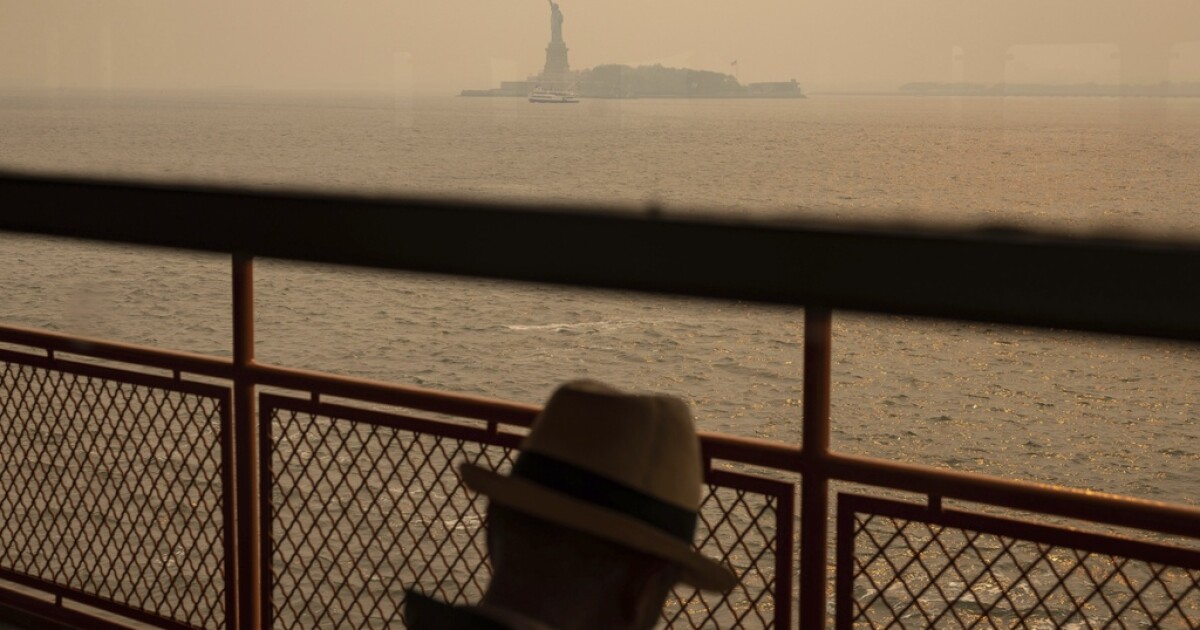
‘Vertigo’: THR’s 1958 Review
In May 1958, Paramount unveiled Alfred Hitchcock’s Vertigo in theaters. The James Stewart and Kim Novak thriller went on to nab two nominations, for art direction and sound, at the 31st Academy Awards. The Hollywood Reporter’s review, originally titled “‘Vertigo’ Fascinating Love Story Wrapped in Mystery,” is below:
Alfred Hitchcock tops his own fabulous record for suspense with Vertigo, a super-tale of murder, madness and mysticism that stars James Stewart and Kim Novak. Aside from being big box office, it is a picture no filmmaker should miss if only to observe the pioneering techniques achieved by Hitchcock and his co-workers.
After a horrific fall from a tall building, a San Francisco detective (James Stewart) suffers a neurotic fear of heights and repeated attacks of vertigo. Retired from the force, he is persuaded by a wealthy man (Tom Helmore) to investigate the strange behavior of his wife (Kim Novak). This weirdly lovely woman is believed to be a victim of demonic possession with the spirit of her mad great-grandmother periodically inhabiting her beautiful body. While studying this otherworldly creature, the detective begins to accept the outer forces that seem to dominate her and he falls deeply in love with her. Obeying what she says is an irresistible compulsion, they visit an Old Spanish mission. When she rushes to the top of the bell tower, he is prevented by his fear of heights from following and he sees her fall to her death.
But the story doesn’t end here. Filled with grief and a sense of guilt, the man becomes obsessed in a search to find or re-create the woman he has loved and lost. In woman after woman he, momentarily, sees a distant view of his beloved’s features. When approaching closer, he is disillusioned. Finally, in a harsh-voiced common shopgirl, with untidy hair and careless rainment, he catches an elusive echo of his dream woman.
Here, with superb film story telling, Hitchcock discloses to the audience the shop girl has been doubling for the wife from the start, that she was an accessory to the wife’s murder and that, while playing her criminal part in the wealthy husband’s conspiracy, she has fallen in love with the detective who was duped into being a witness to a faked accident. From here on, suspense hangs upon with the guilty girl can hold the affections of the infatuated man without reawakening his latent instincts as a cop. it would be unfair to disclose the final denouement.
Hitchcock tells three distinct types of story in this one picture without a moment of disharmony or audience confusion. The first part of the film is given a fascinating editorial tone of the supernatural. The second act is told from the point of view of the hero’s obsession; the finish is a bang-up straightaway love and detection story.
The measure of a great director lies in his ability to inspire his associates to rise above their usual competence and Hitchcock exhibits absolute genius in doing this in Vertigo. The animated spirals of Saul Bass’s title designs create an effect of dizziness and audience participation (more effective than 3-D) at the very start. Colored lights, filters and tinted printing (in Technicolor) put photographer Robert Burks at the top of his profession. In shot after shot, he makes commonplace scenes of San Francisco traffic seem spiritually macabre. Aided by Richard Mueller, the color consultant, he has equaled (and perhaps surpassed) South Pacific in his creation of dramatic mood by use of tinted lighting. John Ferren’s special sequence of Stewart’s nightmares is hair-raising.
Stewart gives what I consider the finest performance of his career as the detective. He portrays obsession to the point of mania without the least bit of it hamming or scenery chewing. Miss Novak has become a fine actress, especially in the latter part of the film where she appears as the love-possessed shop girl. Here, without the support of her ethereal beauty, she does a really fine bit of trouping. Wally Westmore’s makeups and Nellie Manley’s hair supervision are all important in making the spectator accept the masquerade and, at the proper moments, in keeping the audience guessing.
Barbara Bel Geddes comes into her own as a screen actress as Stewart’s humorous and lovable stand-by girlfriend. And Henry Jones makes much more of his role of a nastily sarcastic coroner. Tom Helmore is a smooth and plausible murderer; Ellen Corby and Konstantin Shayne shine in smaller parts.
The skill with which Alec Coppel and Samuel Taylor constructed their screenplay from a novel by Pierre Boileau and Thomas Narcejac proves two things — 1) that an audience will buy any startling change in human behavior if you give it time (with montages and subtle buildups) to believe the transitions and; 2) that a murder mystery can be the greatest form of emotional drama if one concentrates on the feelings of the characters rather than the plot mathematics. Coppel and Taylor have put together a mosaic without making it look like a jigsaw and amid much story legerdemain, they found time to provide Stewart and Miss Bel Geddes with some priceless bits of homey and funny dialogue.
Hal Pereira and Henry Bumstead give the production good down-to-earth scenic design (both in the studio and on locations in the Bay City) and the set decorations by Sam Comer and Frank McKelvy are good. Edith Head produces another of her masterpieces of costume characterization and film editor George Tomasini has used his splicer and movieola to achieve an orderly synthesis of three photographic styles. Bernard Herrmann’s music conducted by Muir Mathieson keeps the audience hovering with expectancy on the threshold of every thrill.
Vertigo is one of the most fascinating love stories ever filmed. — Jack Moffitt, originally published on May 12, 1958.





























































